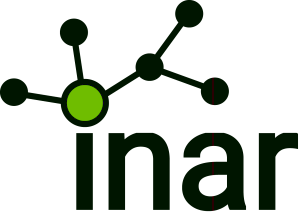How many billions of euros can the construction industry expect? Europe’s construction industry is eagerly awaiting the details of the German “Special Fund for Infrastructure and Climate Neutrality” and the “Made for Germany” initiative. Some of the gigantic investments will in any case be spent on buildings – and therefore also on thermal insulation and energy-efficient refurbishment. Ceresana is now publishing market data and forecasts for the entire European insulation market for the seventh time. Around 210 million cubic meters of insulating materials are currently used in the construction industry in Europe every year.
Insulation Industry Hopes for an Upturn
Over the past two years, Ceresana’s market researchers have recorded an overall decline in demand for insulation materials in Europe (including Russia and Türkiye). Although the renovation construction sector is developing dynamically in various regions, it can only partially compensate for the tense situation in new construction, where new projects are being abandoned, downsized, or postponed. The completion of new apartments could now bottom out in the current year: The construction industry in Europe is expected to stabilize slightly from 2026. In some countries, however, the turnaround in the insulation market is likely to take a little longer. In Italy and France, major support programs for the construction industry have just ended. The manufacturers and processors of insulation materials are now expecting a lot from the billions in government spending in Germany, but also from the EU Commission’s plans to make the European Union independent of oil and gas from Russia by 2030 and climate-neutral by 2050 by investing in energy efficiency and energy saving. In addition to an analysis of the insulation market development the new market report by Ceresana also provides background information on the regulatory framework in the EU as well as the general economic situation and the situation of the construction industry in the individual countries, including important companies, construction activities, investments, and planned construction projects.
Trend Towards Foam Insulation
According to Ceresana’s market research, the demand for expanded polystyrene (EPS), which is sold under trade names such as Styrofoam or Airpop, is currently growing in Europe. Other foamed plastics are also used for thermal insulation and soundproofing: extruded polystyrene (XPS), polyurethane (PUR), and polyisocyanurate (PIR). On the one hand, synthetic insulating materials made from plastics are produced from crude oil or natural gas and have to be treated with flame retardants. On the other hand, they score points for durability, weather resistance, low weight, and, so far, low costs. The mineral wool market, which includes mineral fiber insulation materials made from rock wool or glass wool, is developing less dynamically. Bio-based insulation materials, which are ideally compatible with bio-based paints and coatings, bio-adhesives, and ecologically beneficial building materials, still only account for a small proportion of the total European insulation market. The types of insulation material used vary greatly from region to region. Ceresana’s new market report therefore deals with the specific circumstances and factors in chapters focused on individual countries.
Current Market Study “Insulation Materials – Europe” (7th Edition):
Chapter 1 provides a well-founded overview of the entire European market for insulation materials in the construction industry with forecasts up to the year 2034. Clear tables and graphs provide up-to-date market data on the most important types of insulation material: EPS, XPS, PUR/PIR, Glass wool and Stone wool. A separate section provides a brief overview of bio-based insulation materials.
Chapter 2 presents a detailed analysis of the thermal insulation market size and growth in 18 European countries: Demand, revenues, production, and trade of insulation materials are each considered individually. The key figures in millions of cubic meters are shown separately for the various material types. Demand is also broken down into the construction segments: New construction, Renovation, Residential construction, Non-residential construction.
Chapter 3 presents useful company profiles of the most important insulation manufacturers – clearly arranged according to contact details, revenues, net income, product range, production sites, profile summary, as well as product types and insulation application areas. In-depth profiles of the 50 most important manufacturers are provided, including Compagnie de Saint-Gobain S.A., Holcim Ltd., Sika AG, Knauf Insulation GmbH, Kingspan Group plc, SOPREMA Group SAS, Etex Group, and ROCKWOOL International A/S.
Further information on the new edition of the market study “Insulation Materials – Europe” (7th edition): https://ceresana.com/en/produkt/insulation-material-market-report-europe

About Ceresana
As one of the world’s leading market research institutes, Ceresana specializes in the chemicals, plastics, packaging, and industrial goods sectors. Special focus areas are bio-economy and automotive / mobility. Companies have been benefiting from our high-quality industry analyses and forecasts since 2002. More than 250 market studies provide more than 10,000 customers around the world with the knowledge base for their sustainable success. Learn more about Ceresana at www.ceresana.com
Let’s meet! The new Ceresana event series on the future of the bio-economy continues. The online events “Future of BioPlastics” and “Future of BioPackaging” will take place in September and October 2025: https://ceresana.com/en/events
Ceresana
Mainaustrasse 34
78464 Konstanz
Germany
Press Contact: Martin Ebner, m.ebner@ceresana.com
